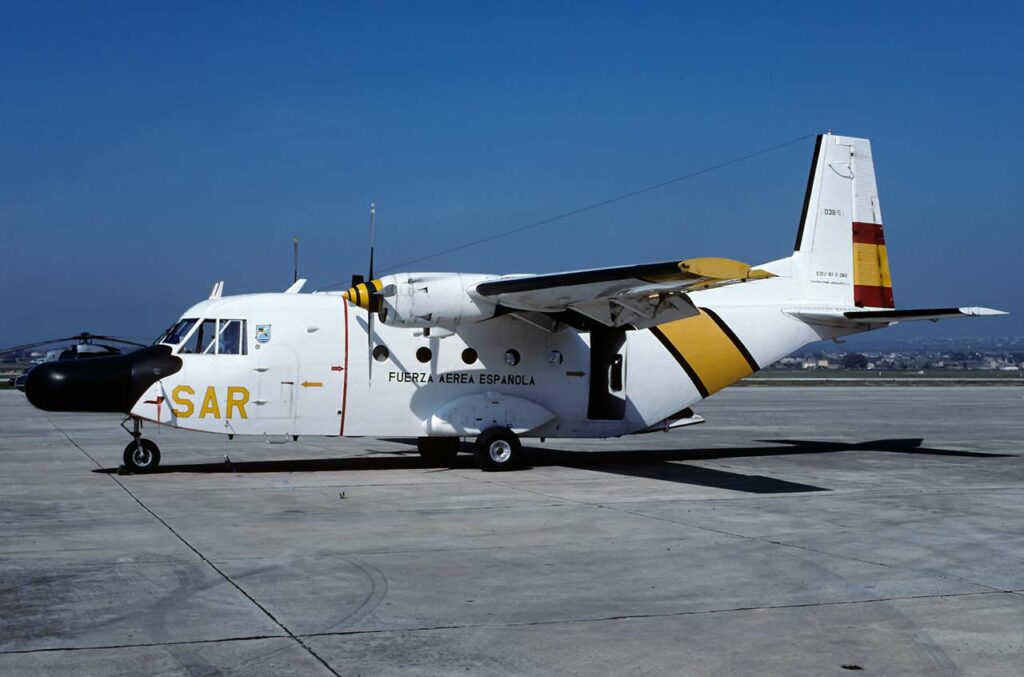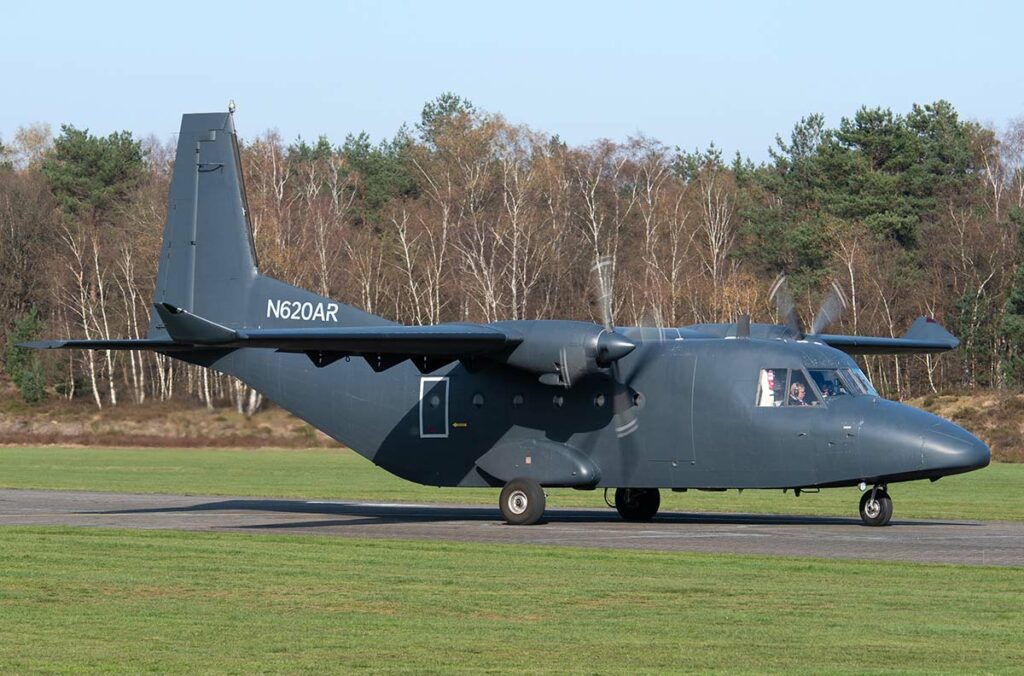A robust, versatile STOL utility aircraft designed for military and civilian use, excelling in rugged conditions.
In brief
The CASA C-212 Aviocar is a twin-engine turboprop short takeoff and landing (STOL) aircraft developed by the Spanish aerospace company CASA. It first flew on 26 March 1971, designed primarily for military transport, and also found extensive use in civilian roles including cargo transport, civilian passenger service, and aerial surveillance. The C-212 features a high-wing configuration for improved performance in STOL operations, a rear loading ramp for easy cargo handling, and is known for its rugged construction and ability to operate from unprepared surfaces.

The Airbus Military (CASA) C-212 Aviocar transport
The development of the CASA C-212 Aviocar was initiated in the late 1960s to meet the Spanish Air Force’s need for a versatile, robust, and efficient medium tactical transport aircraft. It was a period marked by rapid advancements in aerospace technology and a growing emphasis on operational versatility and cost-effectiveness in military procurement.
History of the Development
The CASA C-212 project was launched by Construcciones Aeronáuticas SA (CASA) to replace older transport aircraft with a modern design capable of performing in diverse operational scenarios, including STOL capabilities for undeveloped and rough airstrips common in military and humanitarian missions. Its first flight in 1971 marked the successful introduction of a platform that balanced performance, reliability, and operational flexibility. The aircraft was designed without a specific NATO nickname, focusing instead on its functionality and adaptability to various roles.
Design of the CASA C-212 Aviocar
The aircraft’s design centers around its STOL capabilities, facilitated by its high-wing configuration, robust landing gear, and powerful turboprop engines. It was built to carry up to 25 troops or equivalent cargo and equipped with a rear ramp for parachute drops and easy loading/unloading of materials. The dual-engine design provided reliability, while its simple, rugged construction ensured durability and low maintenance costs. The design’s primary advantage is its versatility, capable of operating in harsh conditions and short, unprepared runways, making it invaluable for military, cargo, and humanitarian missions worldwide. Drawbacks include limited speed and range compared to larger, more complex aircraft, positioning the C-212 as a tactical rather than strategic asset.
Performance of the Airbus Military (CASA) C-212 Aviocar
The C-212’s performance is optimized for STOL capabilities, with various models equipped with different versions of the Garrett AiResearch TPE-331 turboprop engines. These engines provide a balance of power and efficiency, allowing for takeoffs and landings on short and unprepared runways. The aircraft’s operational ceiling and range make it suitable for a wide range of missions, from troop transport to maritime patrol. When compared to other STOL aircraft of its era, such as the De Havilland Canada DHC-6 Twin Otter, the C-212 offers a larger cargo capacity and longer range, albeit with a trade-off in terms of runway flexibility and operational cost.
Variants of the Airbus Military (CASA) C-212 Aviocar
The C-212 series has seen several variants over its production life, each designed to meet specific operational requirements. These include the C-212-100, -200, -300, and -400 series, with incremental improvements in engine performance, avionics, and capacity. Specialized variants have been developed for electronic surveillance, maritime patrol, and search and rescue operations, highlighting the platform’s adaptability to a wide range of mission profiles.

Military Use and Combat of the Airbus Military (CASA) C-212 Aviocar
The C-212 has seen extensive military service worldwide, valued for its reliability and versatility. It has been used in various roles, including troop transport, logistical support, surveillance, and light attack, often equipped with machine guns, rockets, or other light armaments for self-defense or light strike missions. The aircraft has participated in numerous military and humanitarian operations, demonstrating its capability to operate in diverse and challenging environments. Its global presence is a testament to its adaptability, with over 40 countries having operated the aircraft. The C-212 has gradually been replaced in some fleets by newer, more advanced designs, but remains in service in many parts of the world, continuing to prove its worth in a wide range of operational contexts.
–
The CASA C-212 Aviocar embodies the qualities of versatility, reliability, and ruggedness, making it a valued asset in both military and civilian operations worldwide. Its development and sustained use over decades underscore its effectiveness in fulfilling the diverse needs of its operators, from logistical support to direct combat roles. As it continues to serve in various capacities, the C-212 remains a significant example of successful aircraft design tailored to specific operational requirements.
Back to Transport planes.